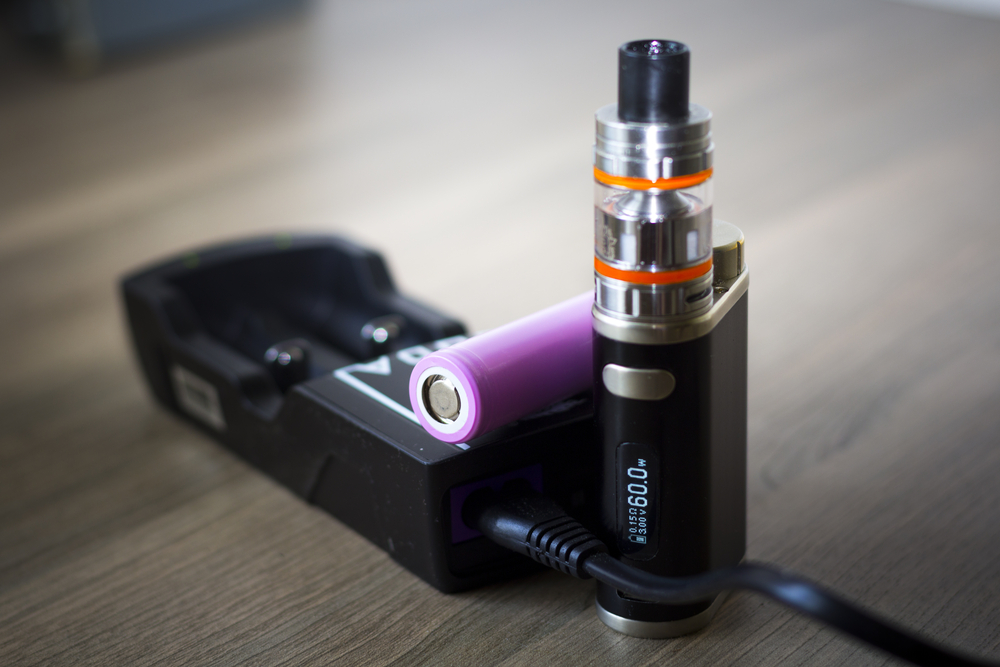
Too often overlooked when it comes to updating and/ or modifying your e-cig kit in the quest for that ultimate, refined, personalised vape, e-cig batteries are nonetheless critical and – whether you like it or not – more complicated vaping components than you might often appreciate. To wit, too many novice, intermediate and (even) seasoned vapers take their batteries for granted, which is a recipe for potential disaster – it can lead to bursting, exploding and fire-causing batteries-gone-wrong. Here are a few important things to consider then before purchasing batteries for your vaping equipment…
Understanding the terminology – mah
An important unit of measurement, ‘mah’ stands for milliampere per hour; your battery’s rating according to mah then will effectively define how powerful it is – after you’ve done a few calculations yourself, that is. Indeed, you can work out the length of a battery’s life by calculating the input current rating and the load current, per the circuit – basically, a battery’s life will be longer the lower its load current. To be fair, though, in order to successfully work out battery life according to mah, it’s rather difficult if you’re not au fait with all the variables involved, as you’ll also have to account for the likes of usage, amperage, coil resistance and general effectiveness and efficiency of the device itself.
All the same, when it comes to considering battery power in relation to the thing’s mah, it’s not always necessary to overcomplicate things. Basically, your best bet is to buy a battery (or batteries) whose mah comes in higher than that of another battery (batteries) available – in simple terms, more mah means lengthier battery life across a day of vaping; a longer vaping day before having to switch batteries.
Internal and external batteries
Whether or not your e-cig device (in this instance, usually a mod) takes internal or external batteries can define the type of mod you use. Often also referred to as, respectively, built-in and replaceable batteries, internal and external vape batteries are different to each other in several ways, as you’d expect. To start with, internal-battery-featuring mods tend to be simpler, more likely factory-manufactured and less versatile than their external-battery-featuring alternatives; the latter often being constructed, at least in part, by experienced vapers themselves, owing to their desire for a device that’s more versatile and powerful than the ‘standard’ mod purchasable online or from the likes of an e cig London outlet. Indeed, a vast array of such customisable mods will be capable of holding anything between one and four (or even more) external batteries, whereas usually devices that rely on an internal battery will hold a single one of them, from which they’ll derive their power.
That said, many external batteries that vapers use are the ‘standard’ yet versatile 18650 type, just as most internal batteries are. Yet, while this may be the case, many internal batteries can be charged in a relatively simple, familiar way – via a USB cable and plugged into the wall (exactly like how most mobile and/ or smart phones’ batteries are charged – but many external batteries require a specific charger (whether they’re 18650 batteries or not).
Fundamentally, though, choosing between internal or external batteries shouldn’t come down to which of them is ‘best’, rather which of them is best suited to the vaping device you’re looking to use – and, thus, what you want to get out of this device according to the sort of vaping experience you’re after.
Checking voltage capacity
Not only to help guide you which charger to buy for your batteries, checking the batteries’ maximum voltage level should also help ensure you don’t overheat them when they’re in your mod; especially if you prefer using a clever, customised mod that, in most cases, will require more voltage (i.e. more power) from its batteries to do all the things it’s capable of (e.g. strong throat hits and cloud-chasing-friendly big plumes of vapour).
Using a battery case
Finally, in order to avoid your spare, charged lithium batteries ‘interacting’ with (that is, being affected and harmed by) coins and keys in your pockets, it’s a very good idea to instead carry the batteries around with you in a specially made – and easy to buy – battery case.


